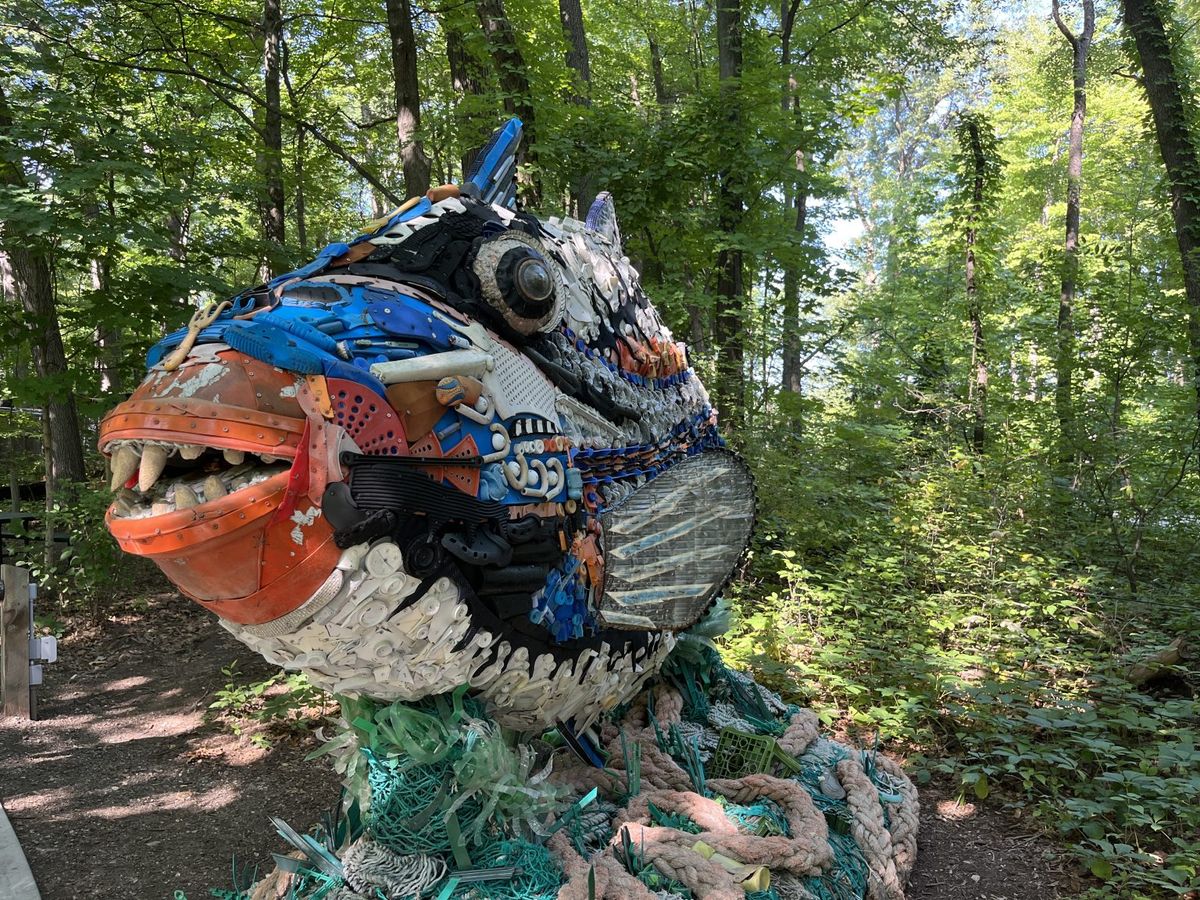There's no such thing as trash
Recycling isn’t a nicety; it’s a necessity. Species can either compete for survival, a costly and risky business, or they can find their own niche.

I spent my Saturday morning picking up trash along the side of the road in the rain. Mainly soggy cigarette butts, the second most common type of marine litter scooped up last year.
The scourge of litter is an easy environmental rallying cry. Maybe too easy. No one likes unsightly trash-filled streets, so we all agree, it’s worth cleaning up. I live near the ocean, so I feel a particular responsibility to keep trash from winding up there, but I also live in a wealthy community—and the cleanest place I’ve lived in in years. Still, this is how I, and a dozen or so others, quite happily spent half a dreary weekend day.
There is no time humans have lived on Earth without leaving their mark. At the University of Washington’s Burke Museum, there’s a striking exhibit that makes this point well. It includes a column that stretches upwards in front of the viewer, inside of which are layers of sediment representing materials laid down over several hundred years. Each layer records a snapshot of human life.
Thousands to hundreds of years ago in the Pacific Northwest, and other coastal areas, large, dense deposits of shells represent people making a living off the coastal resources available to them. Deep in the sediments, these massive collections of shells are some of the most distinctive markers of past human life and its waste.
As time goes by, there’s a shift in what you see being discarded. It’s a change not just in the kind of materials we’re using but also in what we consider to be waste. In the shallower layers, I can make out a lone shoe, an intact glass bottle. We draw not only on more materials, and ingeniously manufactured ones, but we discard a greater variety of objects. Ones that still have use.
“Trash”—like all concepts—is invented. The use of the word “trash” to mean waste didn’t emerge until the 20th century. The original use of the word, emerging in the 18th century, referred to the process of stripping sugar cane to hasten its ripening. (Arguably also fraught, given the human and natural devastation that sugar plantations represent.) After World War II, industry invented disposable goods and the idea that you should throw away all kinds of previously reusable items—bottles, dish ware, eventually, even clothing. And because they made heaps of money on it, businesses also crafted cunning media campaigns to convince Americans that the problem of litter wasn’t theirs to solve, but ours.
In nature, there is no trash. Everything gets reused. One critter’s trash is literally another’s treasure. Plants generate energy via photosynthesis, which takes light energy and carbon dioxide and turns it into energy for the plant, producing oxygen as a byproduct. This planet would be uninhabitable to us without this plant “waste.” This kind of recycling isn’t a nicety; it’s a necessity. Species can either compete for survival, a costly and risky business, or they can find their own niche. Making your living off stuff no one else wants is just a savvy survival strategy.
Which brings us back to the shell middens; they’re actually mined as a resource. Deposits to these ancient trash heaps returned in the form of everything from fertilizer to sidewalks. Though landfill sites might be repurposed, it’s hard to imagine many of our discards as being useful to anyone today, let alone in the future.
Of course, many objects that wind up in the landfill have some use to someone. They just miss their connection. Buy nothing groups have sprung up to right this wrong, matching wanting people with what would otherwise be thrown away: half a bag of flour, an opened bottle of shampoo, a well-loved but meticulously cleaned piece of pet furniture. So we’re reusing. We’re recycling (not a panacea, by the way, especially when it comes to recycling plastic). Remember: The third R is actually reduce.
We have to get away from this knee-jerk reaction of putting it all on the consumer and asking them to demand different things, make their life inconvenient to save the world. Go outside on a cold, rainy weekend morning to pick up other people’s cigarette butts. It’s businesses that make the plastic bottles and styrofoam peanuts, thought they haven’t always.
Still, I am going to ask you to do something: Think differently. Imagine a world where you never threw anything away. Now go live your life, but remember that secret: There’s no such thing as trash.
